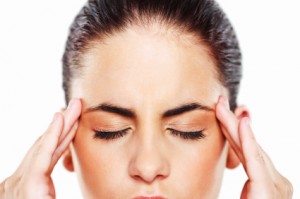 A recent article on Doximity.com offered some excellent advice for those of us who suffer from migraine headaches, but ironically left out one of the simplest and most effective treatments… Botox.
A recent article on Doximity.com offered some excellent advice for those of us who suffer from migraine headaches, but ironically left out one of the simplest and most effective treatments… Botox.
Using Botox to treat migraine headaches remains a dramatically underutilized approach for a variety of reasons. Many people aren’t aware that this is a treatment option, or even if they are they find it difficult to find enough information to make an educated decision about whether or not Botox will work for them. There are also great variations in dosing and technique between different physicians, so it’s often difficult to judge how effective the treatment is.
Botox for migraine therapy is quite popular in our practice, and we’ve had such an excellent success rate with treating even the most severe cases, that we thought it would be beneficial to outline the excellent advice set forth by several migraine researchers across the country in the above referenced article, and to briefly discuss what we feel to be the most effective treatment out there.
Keep reading for more information about what you can do to decrease the frequency and severity of your migraine headaches…
Good advice for all migraine sufferers.
-
Mindful meditation.
- from Doximity.com: Speaking of relaxation, meditation may just be the ticket when it comes to minimizing a migraine’s effect, according to researchers at Wake Forest Baptist University in Winston-Salem, S.C. “Those in our study who took a two-hour instructive class in mindful meditation for eight weeks and meditated on their own five days a week for 35 to 40 minutes experienced migraines that were less severe and shorter,” said lead study author Dr. Rebecca Erwin Wells. Chronic migraine sufferers also reported 1.4 fewer migraines per month on average.
- from Dr. Vendemia: “I think this is an excellent practice that stands a real chance at improving the quality of life of migraine sufferers, and I wish more people had access to training on how to do this. As with most non-medical therapies, many advisers assume that everyone knows how to do these things, but I don’t think that’s necessarily true with practices like meditation. Everyone knows what meditation is, but very few of us know how to meditate. This leads to very few people participating in this practice which means that another treatment option is lost because of a lack of knowledge, which is often the case with Botox for Migraines as well. Mindful meditations is an excellent strategy that everyone who suffers from migraine headaches should look into. If any of our readers have advice about learning how to mediate, please feel free to share them with us so that we can share with the rest of our readership.”
-
Tweet pain away.
- from Doximity.com: University of Michigan researchers analyzed 21,741 tweets about migraine, 65% by people experiencing a headache at that time, and found that expressing feelings about the pain may provide symptom relief. “Neuroimaging studies have suggested that emotional and cognitive areas in the brain can modulate, in part, activity related to the perception of physical pain,” said study author Alexandre DaSilva. “Social media may provide relief for migraineurs that goes beyond the emotional.”
- from Dr. Vendemia: “I found this quite interesting, but I’m not sure it offers any practical advice that can be used in the real world. An equally interested off-shoot of this study would be to evaluate how often screen glare from devices used for social media consumption trigger a migraine, which I consider to be the more likely scenario as compared to social media relieving a migraine.”
-
Don’t obsess over red wine.
- from Doximity.com: Aged cheese. Chocolate. Wine. Caffeine. Most migraine sufferers are familiar with a long list of foods that may kick off a headache. “It’s key to remember, though, that migraines are caused in many people by compounding factors. If you experience a strong smell like perfume, flickering or flashing lights, less sleep and you eat a cold-cut sub with nitrates all in one day, yes, you may get a migraine, but if you ate that sub on a day when you didn’t experience those other triggers, you might be just fine,” said Dr. Fred Cutrer, a neurologist at the Mayo Clinic in Rochester, Minn., in an interview. If a migraine does strike, try eating bread or crackers to raise your blood sugar and potentially ease symptoms: “Personally, I find eating starchy food helps when I’m having a migraine,” Cutrer added.
- from Dr. Vendemia: “Figuring out what your triggers are and working to avoid them is absolutely key to having success with any form of treatment. If you don’t know what your triggers are, you can’t possibly avoid them, and you most certainly will not experience much of a benefit from any form of treatment. And speaking of triggers, one of the things that has impressed me so much about how successful our Botox treatment are is that many of our patients can actually stop avoiding some of their triggers because they are no longer triggers. That’s how well Botox can work sometimes, and it’s wonderful to see people be able to get back to normal life instead of living in fear of their next migraine.”
-
Don’t overtreat.
- from Doximity.com: Before your doctor sends you off for expensive imaging tests like a CT scan or refers you to a specialist, ask to talk about your migraines. A study by Beth Israel Deaconess Hospital researchers in Boston found that 12 million Americans annually are overtreated for headaches. Instead, study author John N. Mafi said, “Clinical guidelines for headache recommend that physicians counsel their patients on lifestyle modifications. Leading an overall healthy lifestyle with a diet rich in fruits and vegetables as well as regular exercise can also help. Another important approach includes keeping a headache diary. Once patients can identify each of their own migraine triggers, they can take active steps to prevent them, thereby lessening the need for medications or visits to the doctor.”
- from Dr. Vendemia: “I agree with this completely. It’s very rare that expensive, complicated tests lead to any meaningful additions to a migraine treatment plan. It’s much more common that patients simply need some education about their condition, and some help identifying their triggers. I always spend at least an hour with my new migraine patients discussing their condition with them before we make any decisions to move forward with any clinical therapies. I need to understand their migraine pattern, their triggers, and how they would define a successful outcome for our treatment.”
Botox for Migraines: the most effective treatment not on the above list.
 Dr. Vendemia says, “I was extremely surprised not to see Botox on this list. It’s a little known fact that Botox can be used to treat even the most severe cases of migraines, and in fact, the most severe cases are usually the ones that respond the best to Botox. My most successful Botox patients are the ones that know and avoid their triggers very well, have tried nearly every adjunctive non-medical therapy, and have tried nearly every medical therapy with little improvement. They are very commonly people who’s daily and weekly routine revolves around avoiding their next migraine, and who must be removed from life almost completely when they are experiencing a migraine. During Botox therapy, I strive to learn about their triggers, and how their headaches influence their daily life. This allows me to plan the injection sites and the dose appropriately, and also to define a set of goals that we would consider as markers of success. We discuss what I call ‘breaking the headache cycle’, which takes most patients about 12 months of regular treatments every 3-4 months. You cannot evaluate the effectiveness of Botox therapy based on a single treatment. It takes at least a year of modulating the injection sites and the total dose to bring headaches under control by breaking the cycle, but once the cycle is broken, people can experience a dramatic improvement in their quality of life where their headaches are not only less frequent, but also much less intense. They find themselves getting back to activities that they couldn’t do before, and enjoying life more because they can stop focusing on avoiding their next migraine. They can usually cut back or completely stop their medications, and get back to life in a way that most of them never experienced before because they’ve been living with their migraines for decades.”
Dr. Vendemia says, “I was extremely surprised not to see Botox on this list. It’s a little known fact that Botox can be used to treat even the most severe cases of migraines, and in fact, the most severe cases are usually the ones that respond the best to Botox. My most successful Botox patients are the ones that know and avoid their triggers very well, have tried nearly every adjunctive non-medical therapy, and have tried nearly every medical therapy with little improvement. They are very commonly people who’s daily and weekly routine revolves around avoiding their next migraine, and who must be removed from life almost completely when they are experiencing a migraine. During Botox therapy, I strive to learn about their triggers, and how their headaches influence their daily life. This allows me to plan the injection sites and the dose appropriately, and also to define a set of goals that we would consider as markers of success. We discuss what I call ‘breaking the headache cycle’, which takes most patients about 12 months of regular treatments every 3-4 months. You cannot evaluate the effectiveness of Botox therapy based on a single treatment. It takes at least a year of modulating the injection sites and the total dose to bring headaches under control by breaking the cycle, but once the cycle is broken, people can experience a dramatic improvement in their quality of life where their headaches are not only less frequent, but also much less intense. They find themselves getting back to activities that they couldn’t do before, and enjoying life more because they can stop focusing on avoiding their next migraine. They can usually cut back or completely stop their medications, and get back to life in a way that most of them never experienced before because they’ve been living with their migraines for decades.”
How can I get more information about this topic?
Feel free to give us a call at 917-703-7069, or send us a message by clicking here You can also read more about Botox for Migraine treatments by clicking here or by scheduling a personal consultation with Dr. Vendemia to discuss his technique and customized treatment recommendations for your specific headache pattern.
Doximity.com article referenced above: https://www.doximity.com/doc_news/v2/entries/1659689?_ref=digest&signature=00c9a5b710949df806095eeccdb3aa51966e34e8&token=3d9a6364214cc8b933e6235158ae627038b31661&user_id_hash=01e8de3893ecaac353338591058277633634af86
